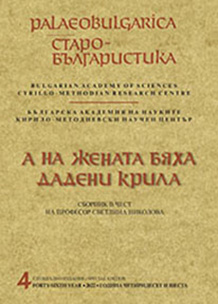В търсене на корените на славянската православна богослужебна музика
In Searching for the Roots of Slavic Orthodox Liturgical Music
Author(s): Svetlana KujumdzievaSubject(s): Music
Published by: Кирило-Методиевски научен център при Българска академия на науките
Keywords: St Cyril; St Methodius; sources; Slavic liturgical chants; service standards; Slavia Orthodoxa.
Summary/Abstract: In the article the sources related to the life and activity of St Cyril and St Methodius are discussed. According to them it is argued that the earliest corpus of Slavic liturgical chants was created by them. The question of the relation between the East and the West in the field of music is discussed. Some arguments are given that the two brothers knew well both the monastic and the cathedral practices. It is concluded that they knew both musical styles of the time – the syllabic and the melismatic. The translated and original works of the two Slavic Apostles are presented. One of the basic musical-hymnographic forms is discussed – the kanon: the two brothers developed this form according to the main tendencies of the time. The compositional technics that were used by both of them, the principles of their translation, as well as the books that were used in their worship are observed. Arguments are given that the hymnographic book, which they used in their worship, was the Tropologion, the universal hymnographic book with a great dissemination in various languages in the East. The book contained chants for the whole liturgical year according to the established church calendar. The approval of the activities of the Holy Brothers by the Roman popes shows that their work was carried out at a high professional level. This means that it was done according to the requirements of the existing worship practice in Western Europe, i.e. the activity of Cyril and Methodius was in accordance with the established service standards of the time. It could have been this fact that could have made possible the use of the Slavic books in the churches in the West. The third cultural civilization in Europe was formed – that of the Orthodox Slavs, known as “Slavia Orthodoxa”. The Slavic books were preserved and developed further in Bulgaria and from there the Slavic writing was transmitted to the the newly baptized Christian countries in the East like Russia, Serbia, Walachia and Moldavia.
Journal: PALAEOBULGARICA / СТАРОБЪЛГАРИСТИКА
- Issue Year: 2022
- Issue No: 4 Special
- Page Range: 891-925
- Page Count: 35
- Language: Bulgarian
- Content File-PDF

